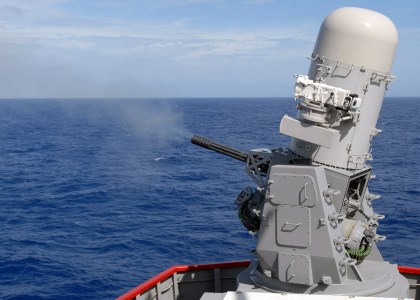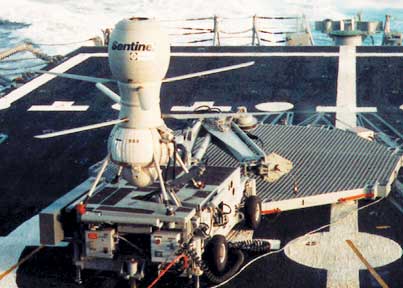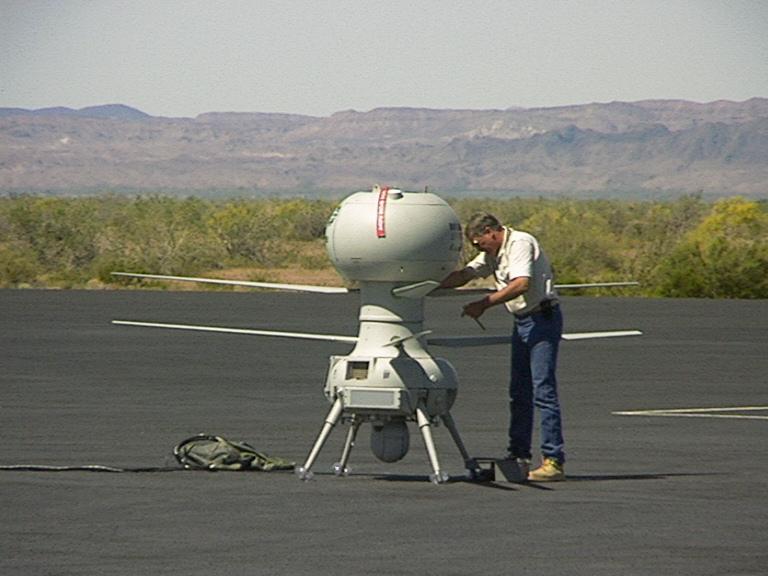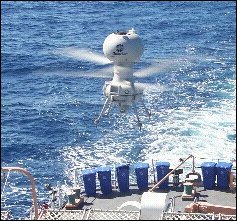- Reaction score
- 5,954
- Points
- 1,090
Some of the advantages of having shipboard drones (at least the UAV type) being discussed in this article from CBC. I would recommend that you go to the site because the images are informative.
Drones on ships
As for drones of the non-flying type here is a nice article from Vanguard Magazine on waterborne drones for Canada.
I recently read that the RCN drone projects are ideally going to be integrated (looking for the reference) in that all shipborne drones must be able to use the same control station and control mechanisms (transmitters/receivers, control computers etc...) because of space restrictions. The idea is that a drone control team would fit into one space and use the same interface for all drones, with the obvious advantages it brings.
What that looks like? Perhaps a computer with just different drone handling programs on it (like a windows interface) which you bring up depending on the drone. The control panel would probably be all singing and dancing with some controls locked depending on the drone being used.
**edit for spelling**
Drones on ships
Canada's fleet of frigates will have new airborne assets in the next decade, according to a report listing the advantages of unmanned airborne drones.
An unmanned aircraft system, or UAS, could be deployed from the deck of a ship to identify targets, do reconnaissance and gather intelligence in areas where human-piloted helicopters could not.
In hostile environments, drones offer an "inherent operational advantage," the Royal Canadian Navy said in documents published online this month.
Double the flight hours of a helicopter
The details of the plans were found in a government request for information from industries, commonly sought prior to issuing tenders for goods or services.
"An embarked Maritime Helicopter on a typical six month deployment would fly approximately 500 hours," the document said.
"The UAS could fly closer to 1,000 hours in that same period."
The document does not say which drone model will be purchased, but it does list its requirements:
Minimum flight time of six hours.
Minimum range of 50 nautical miles from the ship (92.6 km).
Ability to handle crosswind gusts up to 40 knots (74 km/h).
Not require any launch or recovery apparatus.
Vertical take-off and landing or rotary wing capability.
Won't hamper helicopter operations
The military is clear that the UAS should complement existing helicopter operations, not impede them.
"The embarked UAS must ensure that its launch and recovery has minimal interference with the deck cycle of the embarked Maritime Helicopter," the document says.
While the drones may see more flight time, helicopters with on-board pilots will remain the ship's aerial workhorses.
The drones will not be weaponized, carry personnel or heavy payloads and will have a much shorter range than the helicopters.
Other navies have already deployed drones
Earlier this month, the Royal Australian Navy announced it would purchase a number of Camcopter S-100 unmanned vehicles from Austria's Schiebel Group.
The drone helicopter can carry 34 kilograms — typically cameras and sensors — for more than six hours and has a range exceeding 200 kilometres, according to the manufacturer.
The same model has also been purchased by navies in Italy, Jordan, Libya, Russia and China.
The United States defense department is working with American company Northrop Grumman to develop another type of ship-based unmanned aircraft.
The Canadian military will continue gathering input from industry officials this year.
A request for proposals is scheduled to be issued in 2020 and a contract to supply the UAS awarded sometime in 2021.
As for drones of the non-flying type here is a nice article from Vanguard Magazine on waterborne drones for Canada.
I recently read that the RCN drone projects are ideally going to be integrated (looking for the reference) in that all shipborne drones must be able to use the same control station and control mechanisms (transmitters/receivers, control computers etc...) because of space restrictions. The idea is that a drone control team would fit into one space and use the same interface for all drones, with the obvious advantages it brings.
What that looks like? Perhaps a computer with just different drone handling programs on it (like a windows interface) which you bring up depending on the drone. The control panel would probably be all singing and dancing with some controls locked depending on the drone being used.
**edit for spelling**







